How to Dry Firewood 2025
- September 21, 2023
- 1 comment
There’s an art to lighting the perfect fire, and it begins long before the first spark. At the heart of a roaring blaze lies the secret of well-dried firewood. While it might seem like a straightforward task, ensuring your logs are perfectly seasoned can make all the difference between a smoky sputter and a cozy evening glow. Dive in with us as we explore the essentials of drying firewood, and let’s set the stage for those picture-perfect flames.
1. Understand the Importance
Efficiency
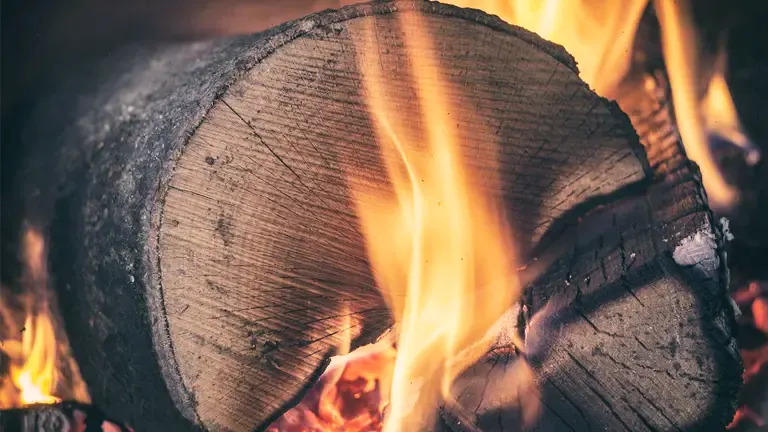
The essence of firewood’s potential lies in its moisture content. When firewood is adequately dried, it reaches its pinnacle of efficiency. The reason is straightforward: as the water content in wood diminishes, the energy that would otherwise be wasted on evaporating this moisture can now be channeled directly into producing heat. Think of it like running a race – without the weight of water holding it back, the wood can sprint towards a hotter, more radiant burn. In a practical sense, this means less wood is required to produce the same amount of heat, saving time, effort, and resources.
Safety
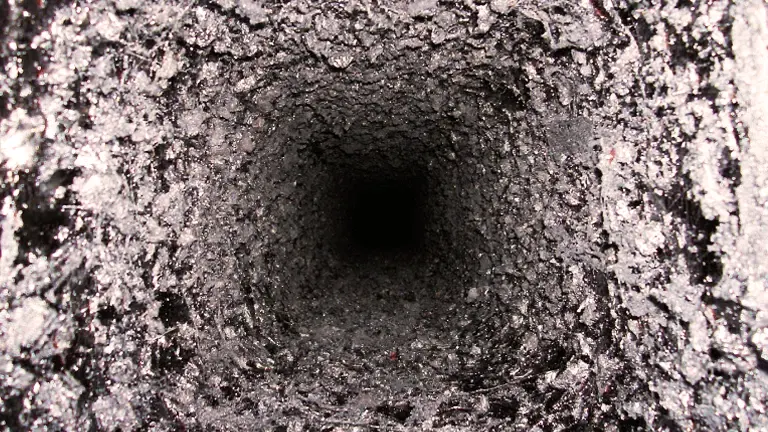
The safety implications of using wet wood extend beyond immediate risks. Wet or ‘green’ wood, when burned, tends to release a substance known as creosote. This sticky and highly flammable substance can accumulate on the inner walls of chimneys, posing a significant fire risk. Over time, this buildup can become thick and may ignite, resulting in dangerous chimney fires that can spread to other parts of a home. Thus, ensuring that your firewood is dry is not merely about achieving a good burn; it’s about safeguarding your home and loved ones from potential fire hazards.
Environment
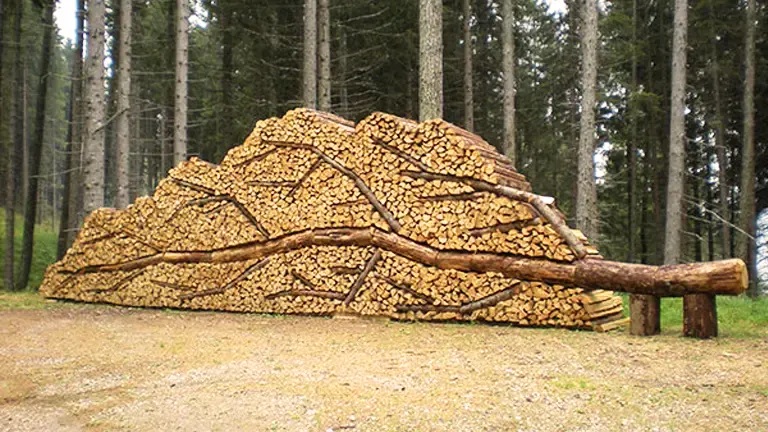
Our environment is a delicate balance of interconnected systems, and the choices we make can have ripple effects across ecosystems. When it comes to burning firewood, the distinction between wet and dry wood might seem minor, but the environmental implications are profound. Burning wet wood releases a higher amount of particulates and pollutants into the atmosphere. These can aggravate respiratory conditions, contribute to smog formation, and even influence climate patterns. On the other hand, well-seasoned dry wood combusts more completely, resulting in fewer emissions and a cleaner atmosphere. By opting for dry firewood, you’re making a conscious choice not just for a better burn but for a healthier environment.
2. Choose the Right Wood
Softwoods vs. Hardwood
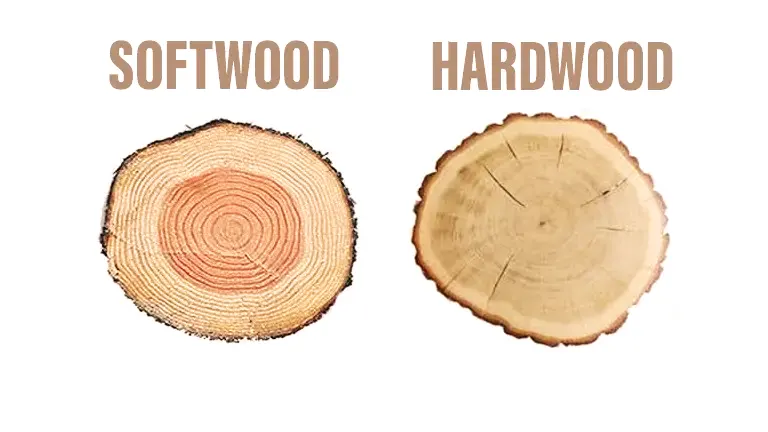
The realm of firewood is broadly categorized into two main groups: softwoods and hardwoods. Softwoods, such as pine and fir, come from coniferous trees. These trees tend to grow more quickly, resulting in a less dense wood composition. This lesser density means they dry faster than their hardwood counterparts. However, there’s a trade-off. While softwoods might be ready to burn sooner, they tend to burn hotter and faster due to their resinous nature. On the other side of the spectrum, hardwoods like oak, hickory, and maple, derived from deciduous trees, are denser. Their dense nature means that they take longer to dry, but once seasoned, they burn longer and produce a more consistent heat. This makes hardwoods ideal for prolonged fires, such as keeping a house warm throughout a cold night.
Grain and Knot Considerations
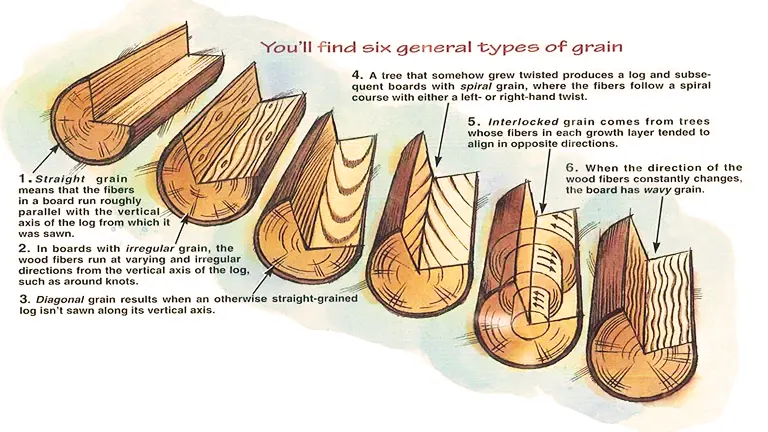
When choosing firewood, the anatomy of the log matters. Straight-grained wood typically splits more easily, facilitating the drying process and making it more user-friendly when preparing logs for storage or burning. Knots, or the points where branches once connected to the trunk, can be troublesome. Large knots not only make the wood harder to split but can also hinder the even drying of the log. As such, wood that’s free from excessive knotting is often preferred for its ease and efficiency.
Timing of Felling
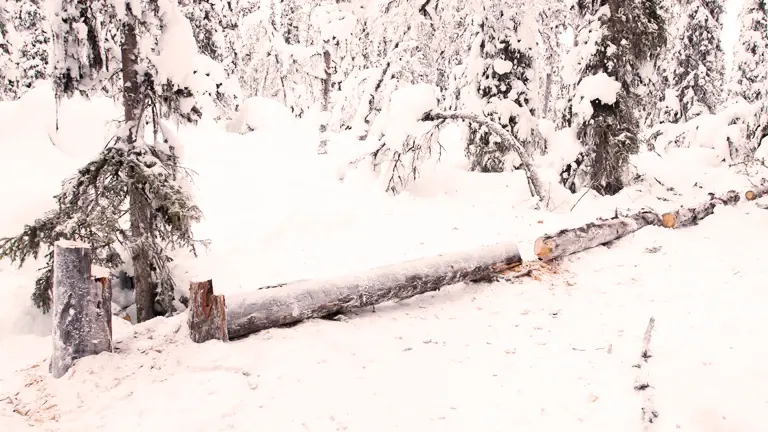
Nature has its rhythm, and for those in tune with it, there are benefits to reap. Trees, like all living organisms, have life cycles influenced by seasons. In late winter, trees are in a dormant phase. Their sap content—essentially the tree’s lifeblood—is at its lowest, as it’s been conserved within the roots. When trees are felled during this time, the wood harvested starts with a lower moisture content, making the seasoning process more efficient. Additionally, lower sap content means less sticky residue, which can be beneficial when handling and burning.
3. Split and Stack
Splitting
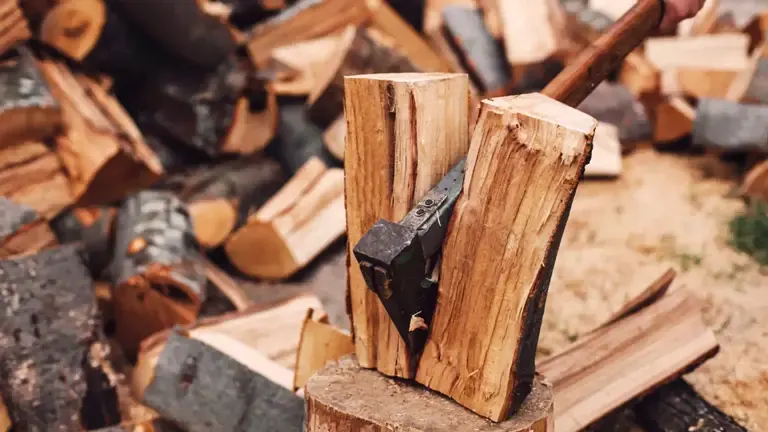
At its core, splitting is much more than just breaking wood into smaller chunks. It’s about optimizing the drying process. When a log is whole, its internal moisture is trapped by its bark, which acts as a natural barrier. By splitting logs, you’re dramatically increasing the exposed surface area, allowing moisture to escape more efficiently. This exposure accelerates the seasoning process, making the wood ready for burning in a shorter time frame. The recommended width of 3-6 inches for split logs is a balanced size: small enough to dry quickly, yet substantial enough to provide a sustained burn. Additionally, logs of this size are generally easier to handle, stack, and fit in most residential wood-burning stoves and fireplaces.
Stacking
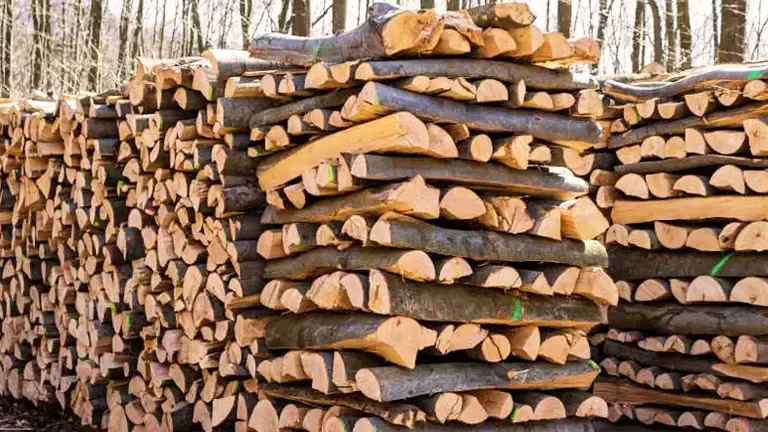
Stacking firewood might seem like a mundane task, but when done right, it serves multiple vital purposes. A crisscross, or “log cabin” style, is often favored among wood enthusiasts. Why? This pattern creates pockets of air between logs, facilitating airflow, which is crucial in the drying process. Just like how a well-ventilated room feels less humid, a well-stacked woodpile ensures that moisture is carried away, rather than being trapped. But stacking isn’t just about drying; it’s also about preservation. Elevating the bottom row of the stack is a protective measure. Direct contact with the ground can lead logs to absorb moisture, which is counterintuitive to the drying process. Moreover, it makes the wood susceptible to fungi, pests, and rot. By using pallets, rails, or even a layer of gravel, you provide a buffer against these threats, ensuring the longevity and quality of your firewood.
4. Choose the Ideal Location
Sun as the Natural Kiln
The sun, in its magnificent glory, is a powerhouse for drying. Its ultraviolet rays not only provide warmth but also have natural antibacterial properties. When firewood is exposed to direct sunlight, the moisture content within each log is heated and gradually evaporates. This process mimics the effects of a kiln, where controlled heat is used to dry timber. By positioning your firewood stack in a sunlit area, you are essentially using nature’s own kiln to season your logs efficiently.
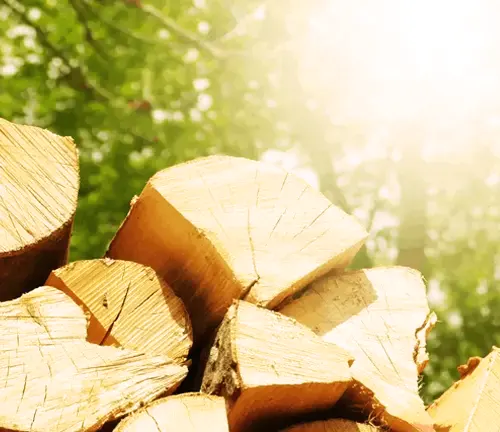
Wind: The Silent Drying Agent
Wind plays an equally critical role in the seasoning process. It’s the unsung hero of the drying symphony. As moisture evaporates from the wood, the surrounding air becomes more humid. A gentle, consistent breeze helps carry this moisture-laden air away, replacing it with drier air. This natural circulation means that the wood doesn’t stew in its own dampness, facilitating faster and more thorough drying. When you position your firewood in a location exposed to prevailing winds, you are optimizing the stack’s ventilation, ensuring that each log is evenly dried from all sides.

Slope: Nature’s Drainage System
Water, though essential for life, is the enemy of stored firewood. A location with a slight slope serves as a natural drainage system. When it rains, the gradient ensures that water runs off instead of pooling around the base of your woodpile. This runoff not only prevents the wood from re-absorbing moisture but also deters the formation of mold and fungi, ensuring the longevity and quality of your firewood.
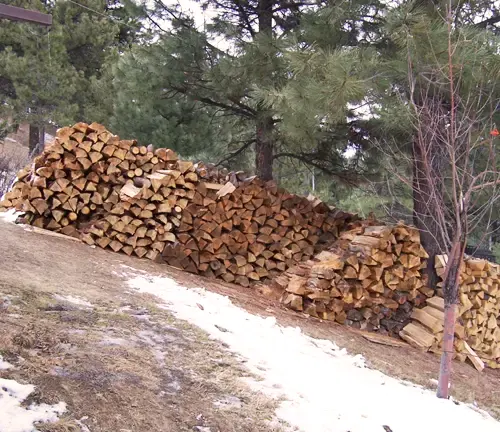
5. Use a Moisture Meter
When a tree is freshly felled, it mimics a water reservoir, with some species containing up to a staggering 50% water. Such a high moisture level impedes efficient burning as the water’s phase transition to steam consumes significant heat energy, depriving the fire of its full warmth. It’s this very reason that underscores the importance of achieving a moisture content below 20%, a threshold where wood not only ignites with ease but also burns fervently, radiating ample heat.
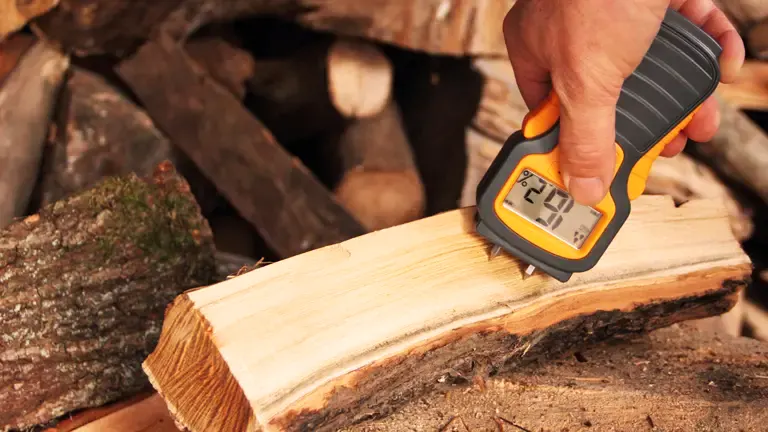
To navigate this nuanced landscape, the moisture meter emerges as an indispensable tool, symbolizing the confluence of age-old wisdom and modern science. While its operation might seem elementary, its utility hinges on precise usage. A superficial reading from a log’s exterior can be misleading since the external layers desiccate quicker than the inner core. For an authentic gauge of moisture content, one must probe the heart of a freshly split log. This central reading offers an unobscured view into the wood’s core moisture state, ensuring that each log thrown onto the fire is primed to deliver its maximum potential.
6. Be Patient and Plan Ahead
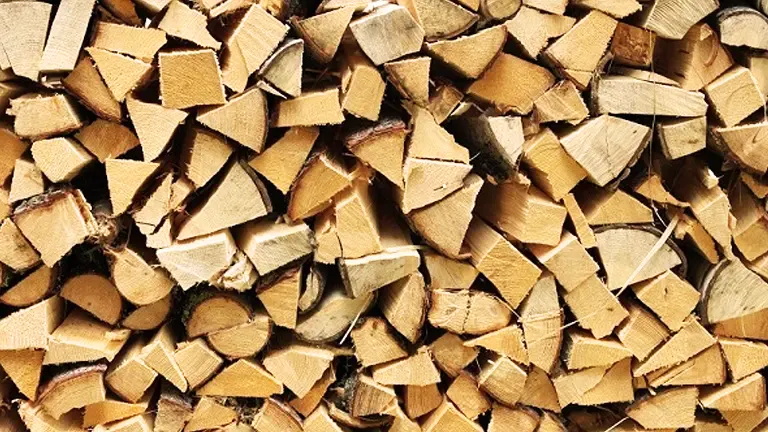
Seasoning firewood is a practice of patience and foresight. Different woods dry at varying rates; while softwoods may take as little as six months, hardwoods can require up to two years. Hastening this natural drying process can compromise the wood’s burning quality. For those relying on firewood for warmth, planning is essential. Initiating the drying in spring capitalizes on the warm, windy conditions of the ensuing months, optimizing the drying process. By the time winter arrives, this ensures a stockpile of efficiently burning wood that provides more heat, less creosote buildup, and a pleasing aroma.
7. Shelter the Wood, but Don’t Suffocate It
Storing firewood effectively requires a balance between protection and ventilation. As the wood nears its optimal moisture content, it becomes even more crucial to shield it from elements that could reintroduce moisture, such as rain or snow. This is where covering the top of the wood stack with a tarp or placing it under a dedicated woodshed roof becomes beneficial. These coverings prevent external moisture from undoing the seasoning process the wood has undergone.
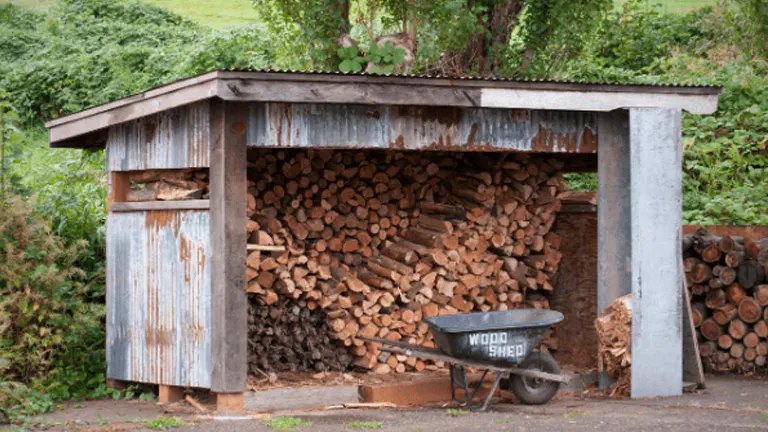
However, while the top protection is essential, completely enclosing the wood can be counterproductive. It’s imperative to keep the sides of the wood stack open. This serves several purposes:
- Airflow: Continuous airflow around the wood ensures that any residual moisture can evaporate. It helps maintain the achieved dryness of the wood.
- Prevents Mold and Mildew: In enclosed or damp conditions, wood can become a breeding ground for mold and mildew. These fungi not only degrade the quality of the wood but can also pose health risks when the wood is burned.
- Consistent Drying: Wood can retain pockets of moisture even when it appears dry from the outside. By ensuring open sides, the drying process remains consistent, reaching even the innermost parts of the stack.
8. Rotate Your Stock
Managing a firewood supply is much like managing any inventory: it’s essential to use a first-in, first-out approach. If you’ve been gathering firewood over multiple years, the practice of using the oldest wood first is beneficial for several reasons:
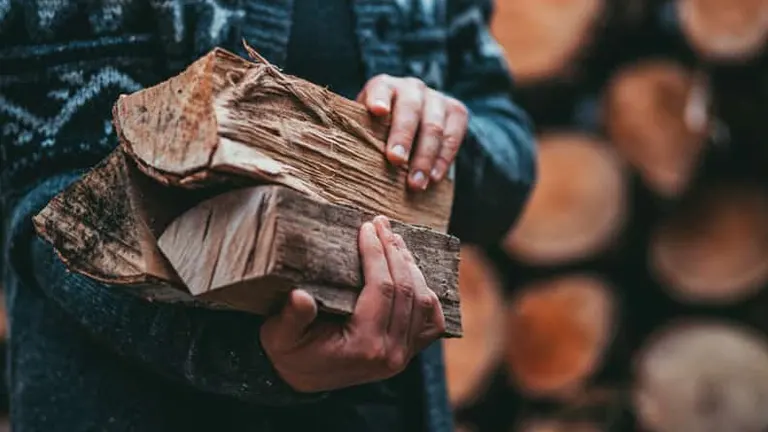
- Optimal Burn: Older, well-seasoned wood is more likely to have achieved the right moisture content, ensuring it burns efficiently and produces a consistent heat output. Using this wood first guarantees you’re benefiting from the best possible burning characteristics.
- Avoiding Decay: Wood, even when seasoned, is organic matter. Over time, prolonged exposure to elements and potential pests can degrade its quality. By burning the oldest logs first, you minimize the chances of the wood beginning to rot or becoming infested.
- Space Management: Regularly using the oldest stock ensures a continual rotation in your wood storage. This not only makes space for newer logs but also keeps the storage area organized and easier to manage.
9. Spot Check for Dryness
Ensuring your firewood is adequately dried is crucial for efficient burning and safety. While a moisture meter is a precise tool, there are other discernible indicators to help gauge the dryness of your logs:
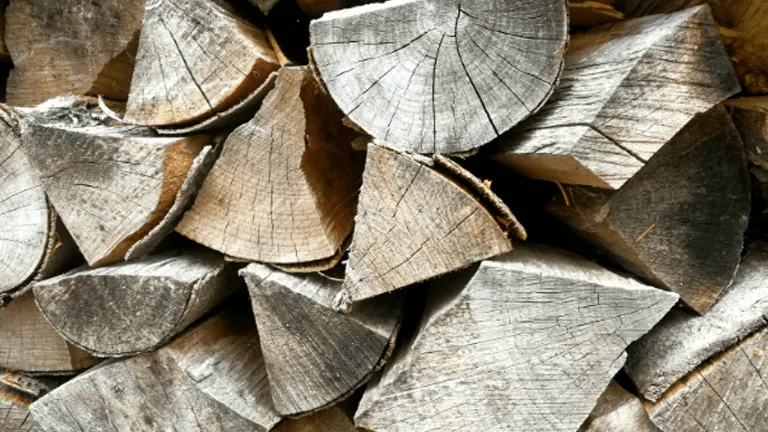
- Color: As wood seasons, its appearance undergoes changes. Dry firewood often transitions to a darker, grayish hue compared to the fresh, vibrant color of green wood. This change is due to the loss of moisture and the natural aging process of the wood.
- Sound: The acoustic properties of wood are influenced by its moisture content. When two dry logs are tapped together, they produce a clear, ringing sound, almost like a clink. In contrast, wet or green logs tend to produce a dull thud, indicating the presence of more moisture within.
- Weight: Water is heavy. As wood loses its moisture content, it becomes significantly lighter. If you’ve been handling firewood for a while, you’ll notice this difference in weight quite evidently between seasoned and unseasoned logs.
- Cracks: As wood dries, it contracts. This contraction can lead to the development of radial cracks at the ends of the logs. These cracks, often referred to as “checking,” are a natural part of the drying process and are clear indicators of well-seasoned wood.
10. Relish the Results
The process of seasoning firewood, with its patience, attentiveness, and care, culminates in moments of reward. Having mastered this art, each fire you ignite becomes more than just warmth; it’s a tangible expression of your commitment and effort.
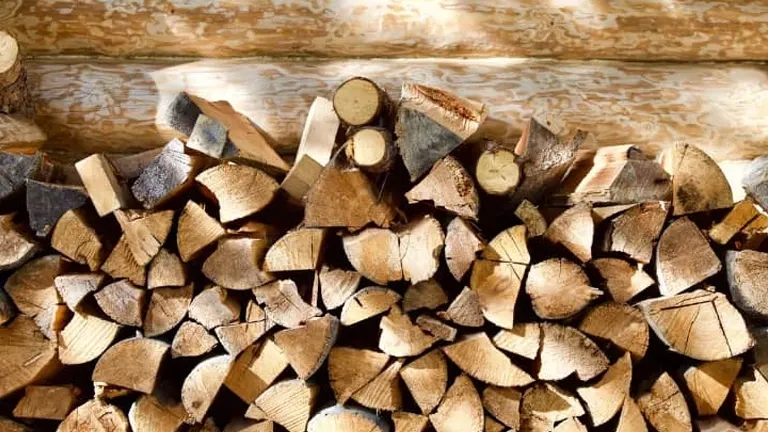
There’s an unmatched satisfaction in seeing logs catch fire effortlessly, producing vibrant, dancing flames that illuminate and warm your surroundings. The heat they emit feels richer, the ambiance more inviting, and the scent of well-seasoned wood burning can evoke feelings of comfort and nostalgia. Moreover, every crackle and spark serves as a gentle reminder of the time and dedication you’ve invested.
So, as you sit back and soak in the warmth, take a moment to appreciate the journey. From choosing the right logs to meticulous drying, every step was a labor of love. Now, you’re reaping the benefits, basking in the glow of a perfect burn that you’ve so carefully nurtured.
Conclusion
Properly dried firewood is both a science and an art. By following these steps and respecting the process, you’ll not only have efficient fires but will also contribute to a safer and more environmentally friendly world. So, the next time you’re sitting by a crackling fire, remember: it’s not just about the wood, but how you prepare it.
FAQs
- Why does freshly cut firewood hiss when burning?
When you hear a hissing sound from firewood, it’s usually the water inside the wood turning to steam and escaping. This is a sign that the wood isn’t fully seasoned. - Can I speed up the drying process with an oven or kiln?
Yes! Kiln drying is a method used to accelerate the seasoning of firewood. An oven can also be used on a low setting for smaller amounts, but be cautious as there’s a fire risk involved. - How does the moon’s phase affect firewood drying?
Some ancient traditions believe that woodcuts during the waning moon dry faster and burn better. This is based on the idea that sap levels in trees are lower during this phase. - Are there specific woods that dry faster than others?
Yes, softwoods like pine and cedar tend to dry faster than hardwoods like oak or maple due to their lower density and different cellular structure. - I’ve heard about “standing dead” firewood. What is it?
“Standing dead” refers to trees that have died but haven’t fallen over. Since they’ve been air-drying naturally, they can often be drier than freshly cut wood, making them a good choice for burning.
As the embers of this guide dim and the last wisps of smoke rise, we invite you to fan the flames of knowledge. If you’ve found our deep dive into the world of firewood enlightening, we’d be thrilled to hear from you. Every log has its story, and every fire has its unique dance; perhaps you have tips or tales of your own to share. In this evolving journey of understanding wood and fire, your insights can be the spark that lights up someone else’s heart. So, please, leave a comment, share your thoughts, or ignite a conversation. From the heart of our blazing passion to yours, thank you for reading and kindling the warmth with us.

David Murray
Forestry AuthorI'm David Murry, a forestry equipment specialist with a focus on chainsaw operation. With over 13 years of experience, I've honed my skills in operating and maintaining a wide range of machinery, from chainsaws to log splitters. My passion for the outdoors and commitment to sustainable forestry drive my work, which emphasizes safety, efficiency, and staying updated with industry advancements. Additionally, I'm dedicated to sharing my expertise and promoting environmental awareness within the forestry community.













I've just come across your really interesting and informative site. I've bookmarked the pages on drying and storing firewood so that I can get my partner to read them in the hope that he finally takes on board what I've been telling him. He seems to believe it's just me being awkward when I complain that the logs we get delivered are not dry enough. I think our mistake is to always leave it too late to order them so we might be getting the rump of the supplier's stock, even though they always claim the wood is ready to burn. I realise now that we should probably try to get ahead and stock up so that we can burn this year's supply next year. Thank you for all your helpful information.
Susan Kimber
December 10, 2023 3:52 pm